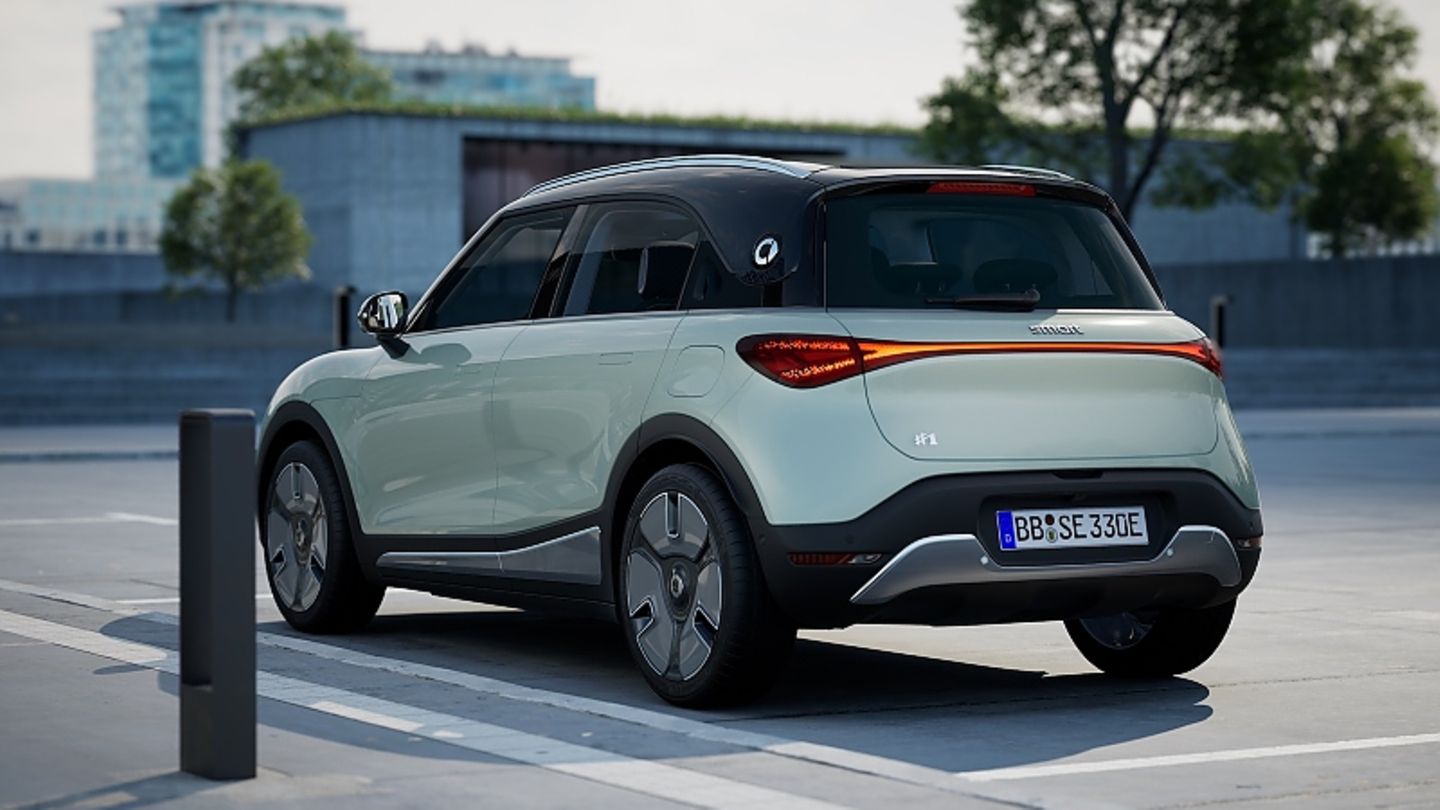Smart wants to become a successful brand for compact electric vehicles in the coming years. The #01 bids farewell to the micro segment while combining Mercedes design and build quality with Geely’s electric expertise.
Smart dares to restart under the Chinese flag. The global headquarters are in the Chinese metropolis of Xi’an, city of the Terracota Warriors, where the threads of research, development and production of the #01 come together, while the design comes from Sindelfingen. “We are starting with a compact crossover, which is a transversal segment worldwide, bringing us the volume that every newcomer needs in this competitive market,” explains Yifeng Tan, Product Manager at Smart Europe will grow and a small Fortwo successor is definitely being considered to replace the old electric model from 2024.
Geely’s Sustainable Experience Architecture (SEA) was first unveiled in Spring 2021 at premium electric brand Zeekr and its 001, which launched in the Chinese market a year ago. It is now the technical basis of the reborn Smart, dubbed #01, with the social media icon intended to add a modern aura to an otherwise uninspired nomenclature. In this case it’s a 66kWh lithium nickel cobalt manganese battery with a DC peak charging capacity of 150 kilowatts, which is more than many competitors in this class. Eight years and 160,000 kilometers of battery guarantee speak for the confidence in the energy storage provided by Vremt, a former Geely subsidiary. The range varies only slightly between the Pro, Premium and Brabus models, around 400 kilometers. The most powerful model of the Smart #01 has all-wheel drive thanks to a second motor on the front axle that contributes 115 kW / 156 hp. The normal rear-wheel drive vehicles deliver 200 kW / 272 hp / 343 Nm; the Brabus powerful 315 kW / 428 hp and 543 Nm maximum torque.
At the beginning of the journey, the battery was 99 percent full and showed a range of 436 kilometers and after 94 kilometers the on-board computer reported that 319 kilometers were still available. This corresponds to an average consumption of 19.1 kWh / 100 km, which is well above the average of 16.7 kWh homologated by Geely. Ride comfort and dynamics are well balanced, which means that the 1.8-tonne electric crossover does not experience any excessive body roll, even at a brisk pace. Even bumps in the road are absorbed by the suspension with McPherson struts at the front and a multi-link at the rear. From a standing start, the 4.27 meter long rear-wheel drive accelerates to 100 km/h in 6.7 seconds thanks to 200 kW/272 hp and is electronically locked at 180 km/h.
The steering gives a good feel of the road, although it’s not the most direct of its kind on the market. However, the three driving programs do not have a major impact, because Eco, Comfort and Sport are largely identical, apart from the presentation on the 12.8-inch central display. No gearbox, no different engine sound, no variable damping, hardly any steering variations, no maximum speed limit with Eco – why bother playing with the driving modes? There are also three recuperation modes, which are also defined via the central infotainment screen. There’s Standard, Strong and e-Pedal, but Smart should go back to the development center and revise the way they’ve been phased out. The default program is fine in itself, but “Strong” doesn’t really deliver what it says on the tin, so it’s hard to tell a difference. The so-called “e-Pedal” is also too weak and does not do its job, since you have to supplement the braking effect with the left pedal in almost every situation.
The space is much better, because the legroom is generous in both rows. This applies – provided the rear is occupied by only two people – also for the second row. The split folding rear seats slide on a 13-centimetre rail, which allows legroom and trunk volume to be adjusted according to specific needs. The loading volume is between 273 and 426 liters, which is extended by the small 15-liter frunk under the front hood. Even in the foremost position, a 1.80 meter tall passenger can find enough space without their knees being pressed against the backrests of the front seats. Headroom is also generous, and even with the standard panoramic roof, there’s plenty of overhead space. In addition, there are positive impressions of the processing: Most surfaces are not softly foamed, but processed solidly. At least in the noble premium equipment there are soft surfaces in the upper area of the door panels and the dashboard.
Chinese manufacturers generally use above-average infotainment systems. The Smart #01 also benefits from this. Its Qualcomm 811 chipset along with ECARX software is characterized by good graphics and a fast response time, and the operation is altogether more intuitive than that of most competitors. Even the AI avatar Fox enables fluent interaction with most vehicle functions via voice control – but only in English for the time being. But there are also some downsides, as it seems VW’s ID family has served as inspiration for the thin nine-inch instrument panel, and a few fewer menu items on the center screen may well be the same. The almost useless driving modes, vehicle settings and the defrosting and heating functions of the front and rear windows can be controlled directly via a button bar below. The early test vehicles also lacked Android Auto or Apple Car Play connectivity. This should be improved by the market launch in early 2023 – but not wirelessly. In terms of price, the various Smart models are close together. The basic model of the Smart #01 Pro starts at 41,490 euros. Most customers should opt for the more elegant Premium, which starts at 44,490, and a real buy is the Brabus, which costs 48,990 euros – no other vehicle on the market currently offers 428 hp for less money.
Source: Stern
I am a 24-year-old writer and journalist who has been working in the news industry for the past two years. I write primarily about market news, so if you’re looking for insights into what’s going on in the stock market or economic indicators, you’ve come to the right place. I also dabble in writing articles on lifestyle trends and pop culture news.




